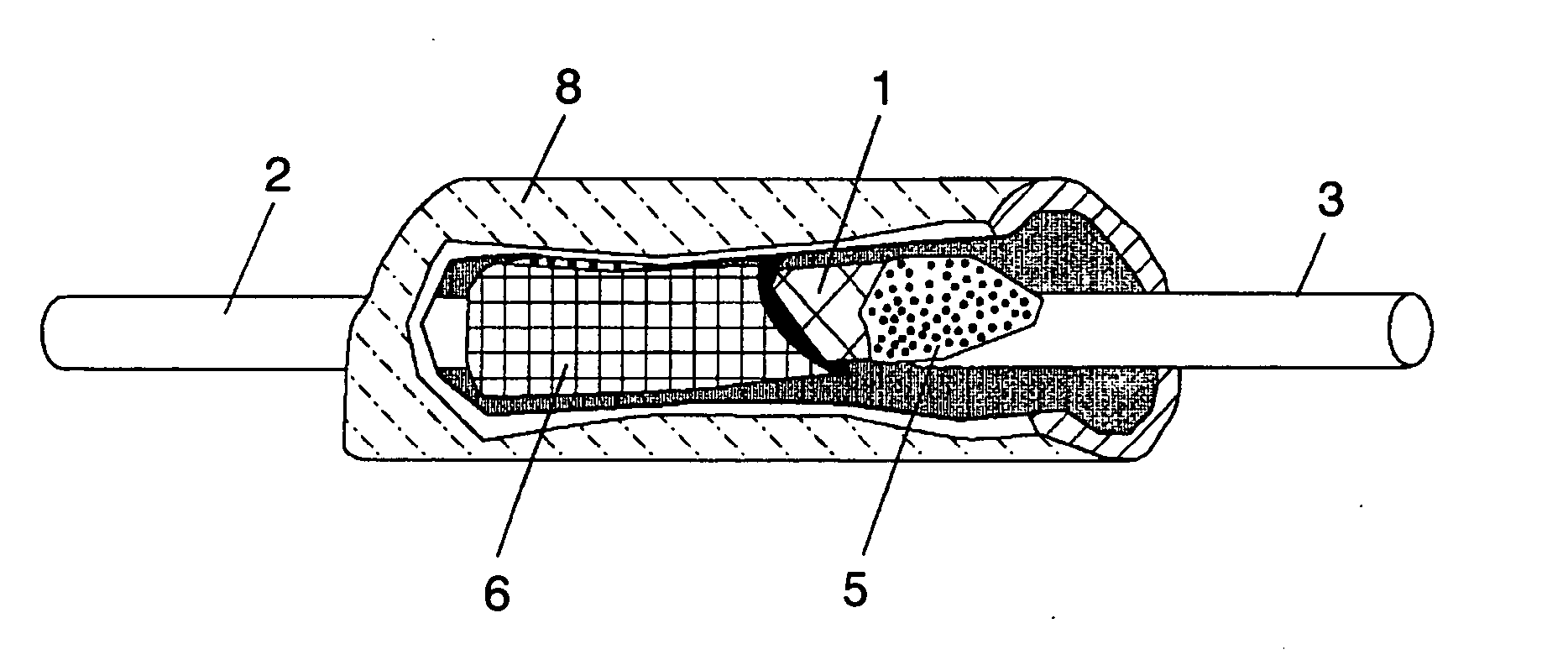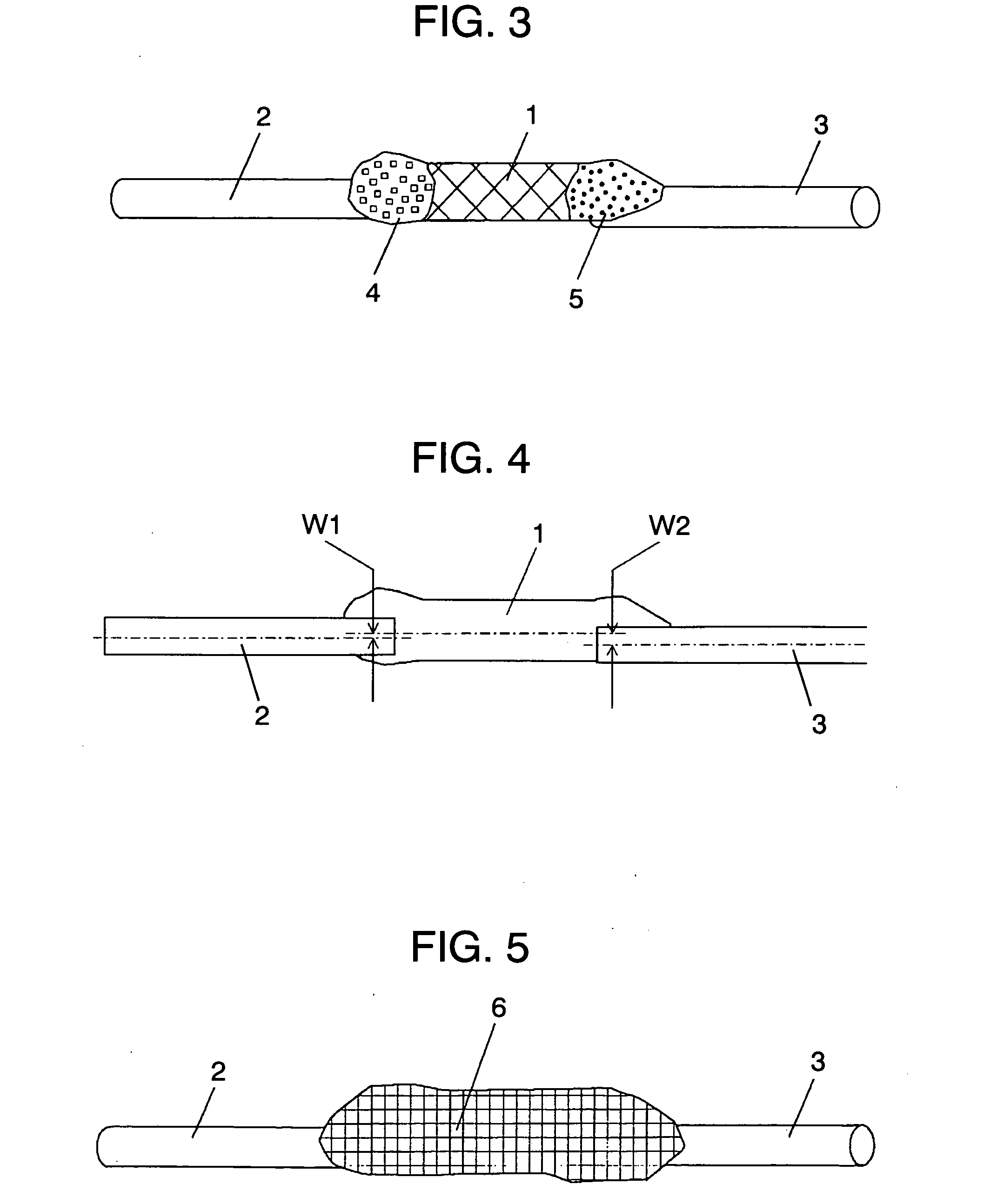Fusible alloy and thermal fuse
a fuse element and alloy technology, applied in the direction of thermally actuated switches, electric switches, electric devices, etc., can solve the problems of excessive heat generation of batteries, damage to electrical devices and batteries of mobile phones, breakdowns or improper operation, etc., to enhance the separation of the fuse elemen
- Summary
- Abstract
- Description
- Claims
- Application Information
AI Technical Summary
Benefits of technology
Problems solved by technology
Method used
Image
Examples
first exemplary embodiment
[0062] First Exemplary Embodiment
[0063] First will be described the relationship between a fusing temperature and liquidus / solidus temperatures of fusible alloy. When fusible alloy melts by heating, the alloy generally experiences changes in the order of the solid phase, the solid-liquid coexisting phase and then the liquid phase. In the process, the boundary temperature between the solid phase and the solid-liquid coexisting phase is described as a solidus temperature; similarly, the boundary between the solid-liquid coexisting phase and the liquid phase is described as a liquidus temperature. A fusible alloy has a fusing temperature at somewhere (fairly closer to the liquidus temperature) between the solidus temperature and the liquidus temperature. The larger the difference between a solidus temperature and a liquidus temperature in a fusible alloy is, more increase variations in fusing temperatures are. On the other hand, the smaller the difference between the two temperatures a...
experiment 1
[0076] (Experiment 1)
[0077] According to composition ratio predetermined by each sample, a first fusible alloy was prepared and then employed for the fuse element of a thermal fuse of each sample.
[0078] In preparing the samples, In of at least 99.99% purity, Sn of at least 99.99% purity, and Bi of at least 99.99% purity were weighed according to the percentage by weight determined by each sample and then melted in a fusing furnace. The metals were kept in the furnace until each metal completely melted. In an advanced state of fusing, the mixture was well stirred to obtain an alloy having uniform distribution in composition. After being stirred well and completely fused, the mixture was slowly cooled at room temperature. Through the process above, each sample was obtained. For each fusible alloy, the liquidus and the solidus temperatures and the difference between the two temperatures were measured and evaluated whether or not each sample provides a desired fusing temperature and fu...
second exemplary embodiment
[0085] Second Exemplary Embodiment
[0086]FIGS. 2 through 5 illustrate the fuse section of the second embodiment of the present invention.
[0087] Fuse element 1 is formed of the first fusible alloy described in the first embodiment. Although FIG. 2 shows substantially linear fuse element 1, it is not limited thereto; the fuse element can be formed into various shapes, for example, a plate or oval shape. Fuse element 1 is the section that actually fuses in a thermal fuse (will be described later), and the essential part of determining the operating temperature of the thermal fuse.
[0088] Here will be described an example of manufacturing fuse element 1. After fusing an alloy having a predetermined composition ratio of elements, inject the melted alloy into a casting cylinder, and then cool it to obtain a solid state. With the application of high pressure, extrude the solidified cylindrical alloy, through an extruder or the like, to form into a wire. Then, the alloy wire is cut to a pre...
PUM
 Login to View More
Login to View More Abstract
Description
Claims
Application Information
 Login to View More
Login to View More - R&D
- Intellectual Property
- Life Sciences
- Materials
- Tech Scout
- Unparalleled Data Quality
- Higher Quality Content
- 60% Fewer Hallucinations
Browse by: Latest US Patents, China's latest patents, Technical Efficacy Thesaurus, Application Domain, Technology Topic, Popular Technical Reports.
© 2025 PatSnap. All rights reserved.Legal|Privacy policy|Modern Slavery Act Transparency Statement|Sitemap|About US| Contact US: help@patsnap.com



